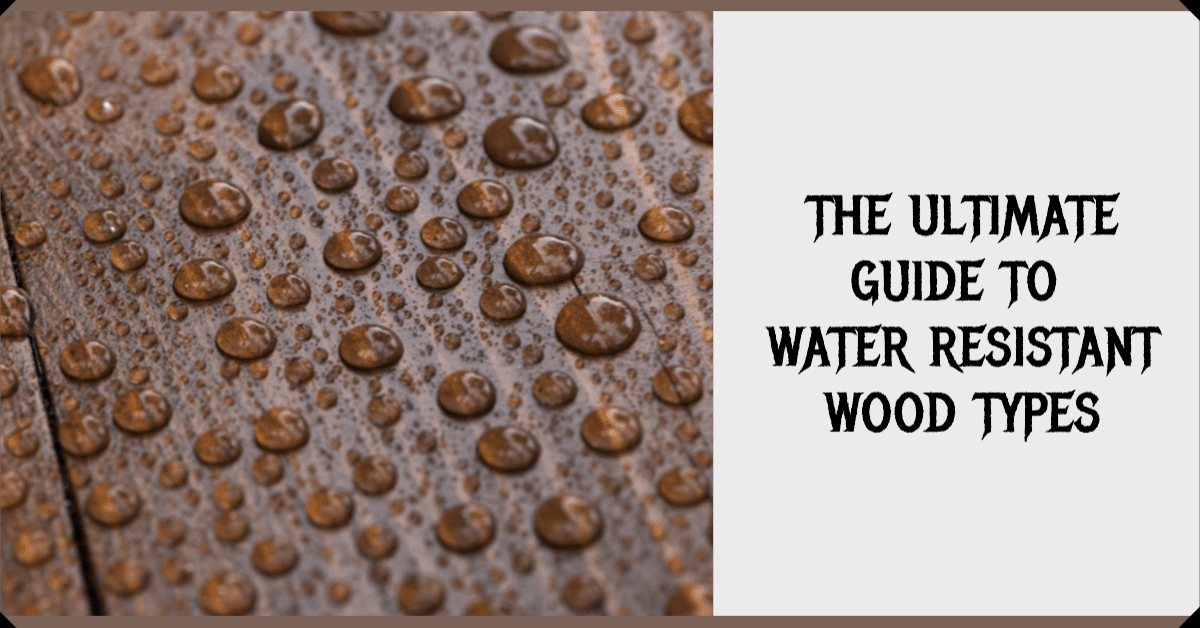Wood has been a timeless and cherished building material for centuries, adding warmth and character to homes, furniture, and outdoor spaces. However, when it comes to using wood in outdoor settings, the constant exposure to the elements—especially water—can pose significant challenges. This is where water-resistant wood comes into play, offering a durable and aesthetically pleasing solution for outdoor applications.
Water-resistant wood is specially treated or naturally durable wood with enhanced resistance to water damage, decay, and rot. While no wood is entirely impervious to water, certain species and treatment methods significantly improve their ability to withstand moisture.
Characteristics of Water-Resistant Wood
- Natural Resistance
Many wood species inherently possess water-resistant properties due to their natural oils, resins, or other chemical compounds. Examples of naturally water-resistant timber include cedar, redwood, and teak.
- Treated Wood
Pressure-treated wood is another common category. Through pressure treatment, preservatives are forced into the wood, creating a barrier against decay, insects, and moisture.
- Density and Hardness
Dense and hardwoods, such as ipe and mahogany, are naturally more resistant to water infiltration. Their tight grain structure makes it difficult for water to penetrate, reducing the risk of swelling and warping.
Popular Types of Water-Resistant Wood
1. Cedar
One of the most widely recognized water-resistant woods is cedar. Known for its distinctive aroma and warm hues, cedar possesses natural oils that act as a deterrent to both insects and decay. These oils also contribute to its water resistance, making it a popular choice for outdoor applications.
2. Redwood
Redwood is another classic choice for outdoor projects, prized for its durability and resistance to decay. Similar to cedar, redwood contains natural compounds that protect against insects and moisture, making it an excellent option for various exterior applications.
3. Teak
Hailing from tropical regions, teak is a hardwood renowned for its exceptional water resistance and durability. Teak’s natural oils create a protective barrier against water, making it a preferred choice for high-end outdoor furniture and marine applications.
4. Ipe
Ipe, also known as Brazilian walnut, is a dense and hard wood with remarkable durability. Its density and tight grain structure make it naturally resistant to water, insects, and decay, making it a popular choice for outdoor decking and other applications.
5. Pressure-treated Wood
While not a specific wood species, pressure-treated wood deserves a mention for its widespread use in outdoor construction. Softwoods like pine are often treated with preservatives through a pressure treatment process, creating a barrier against decay, insects, and moisture.
Practical Applications
Decking
It is a popular choice for decking materials, offering both durability and aesthetic appeal. Whether it’s cedar, redwood, or ipe, these woods provide a sturdy and beautiful surface for outdoor living spaces.
Outdoor Furniture
The longevity and natural beauty of water-resistant woods make them ideal for crafting outdoor furniture. Teak, in particular, is a favorite for patio sets, benches, and Adirondack chairs.
Fencing
Fences are exposed to the elements year-round, making water-resistant wood an excellent choice for this application. Cedar and redwood, with their natural resistance, can withstand the challenges of wind, rain, and sun.
Siding and Cladding
The aesthetic appeal and durability make it an attractive option for exterior siding and cladding. Cedar and redwood are often used to enhance the curb appeal of homes.
Pergolas and Gazebos
Water-resistant wood can add a touch of sophistication to outdoor structures like pergolas and gazebos. These structures benefit from the wood’s ability to withstand exposure to the elements.
Tips for Choosing The Right Water-Resistant Wood
Consider Your Climate
The level of water resistance needed may vary based on your local climate. If you live in a particularly wet or humid area, opting for a wood species with high natural resistance, such as teak or ipe, might be a wise choice.
Maintenance Matters
While water-resistant wood reduces maintenance needs, proper care is still essential for prolonged durability. Regular cleaning and sealing can further enhance the wood’s resistance to the elements.
Budget Considerations
Different types of water-resistant wood come with varying price points. Consider your budget and balance it with the specific requirements of your project to make a cost-effective choice.
Natural vs. Treated
Decide whether you prefer the natural beauty of cedar and redwood or the versatility and affordability of pressure-treated wood. Each has its unique advantages, and the choice often depends on personal preferences and project requirements.
Conclusion
When it comes to outdoor projects, choosing the right type of water-resistant wood is crucial for ensuring both aesthetic appeal and long-lasting durability. Whether you opt for the timeless elegance of cedar and redwood, the exotic charm of teak, the hardness of ipe, or the versatility of pressure-treated wood, understanding the unique characteristics and applications of each type will empower you to make informed decisions. With the wealth of information provided by Timber Explore, you can confidently choose the wood that can withstand the test of time and weather, providing you with a beautiful and resilient environment for years to come.

